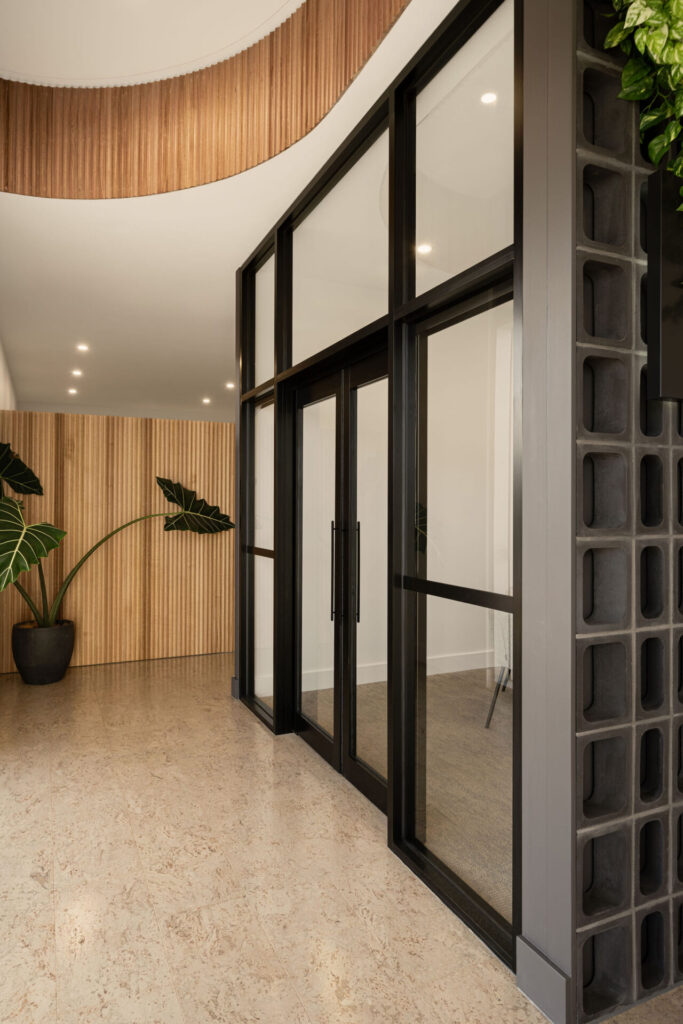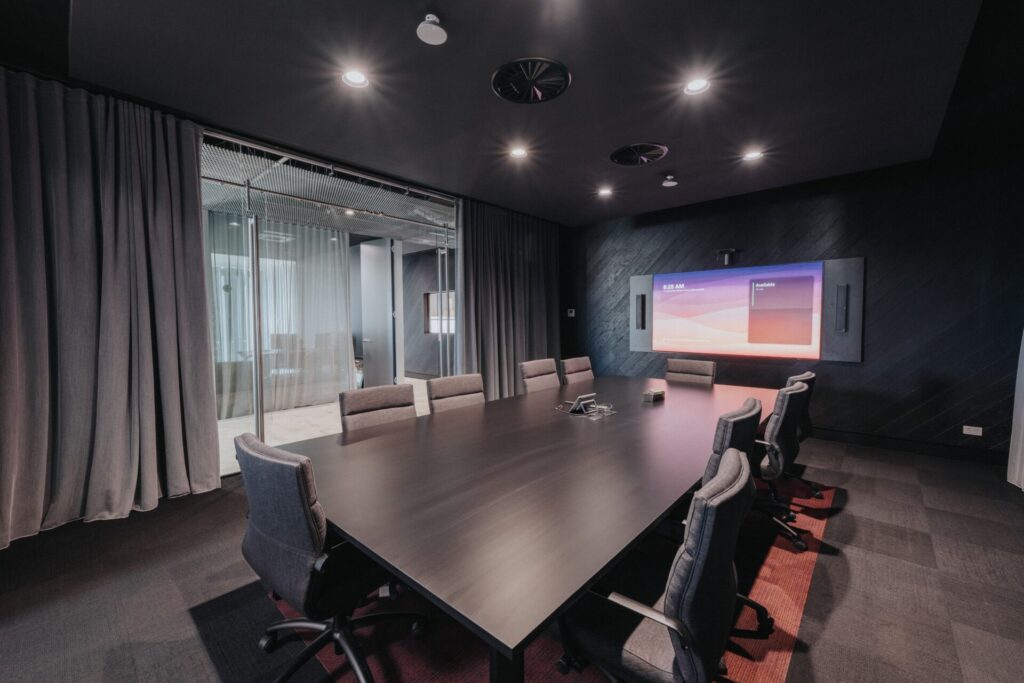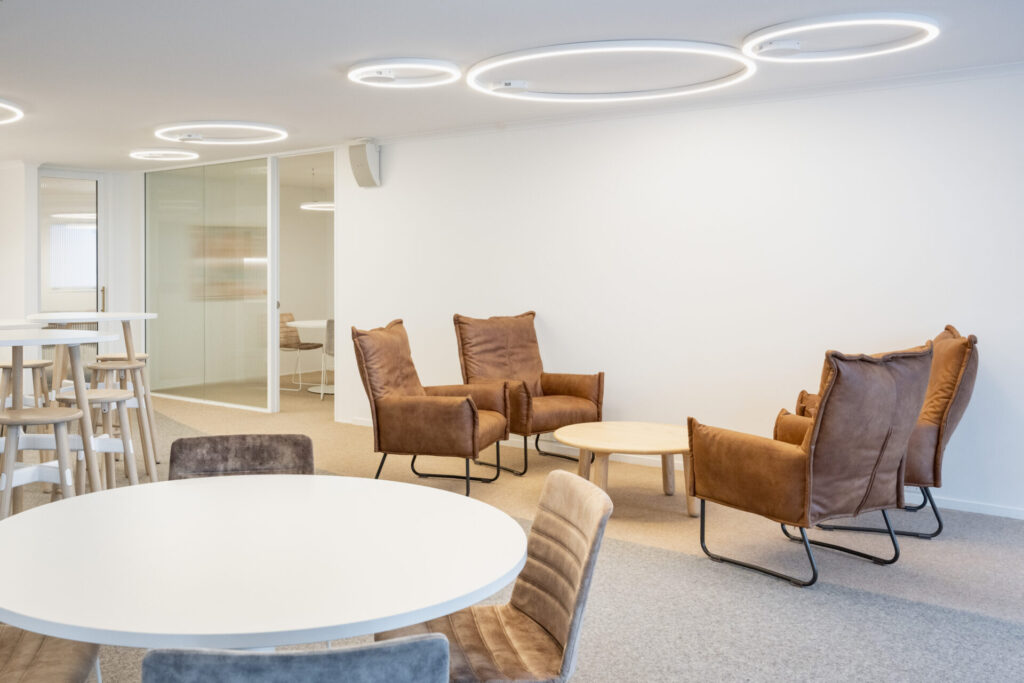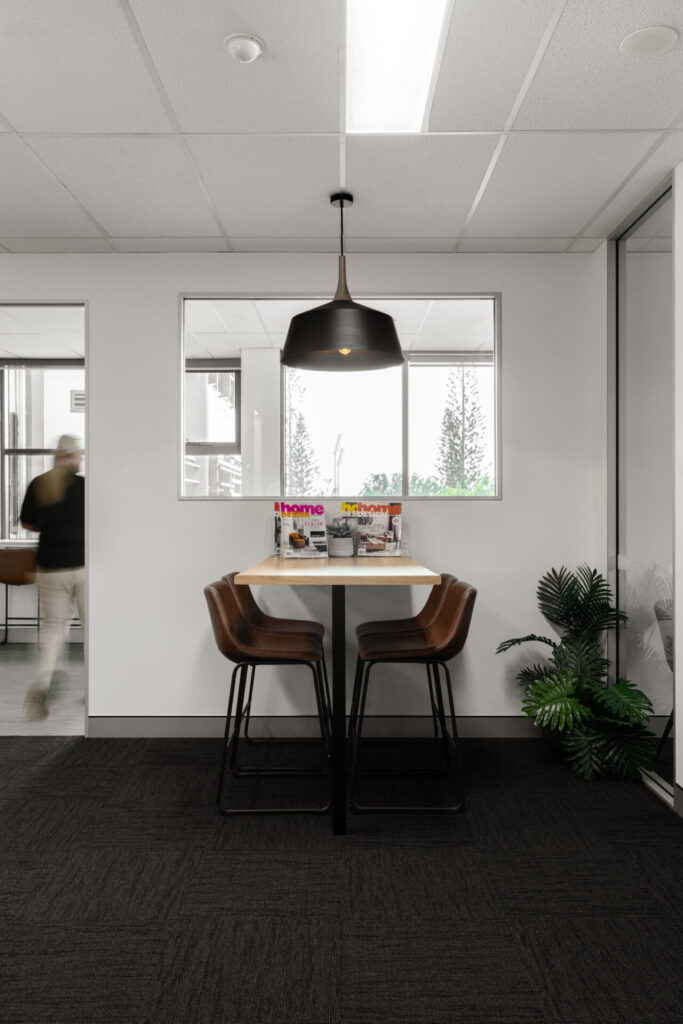The Role of Technology in Modern Commercial Office Fitouts: Enhancing Spaces with Innovation
In today’s fast-paced business world, office spaces are evolving rapidly, and technology is at the forefront of this transformation. As businesses seek to optimise their environments for better employee productivity, enhanced collaboration, and seamless workflows, technology integration has become a key component of modern commercial office fitouts. From intelligent lighting systems to Internet of Things (IoT) devices, smart solutions are driving innovation in workplace design, making offices not just functional but highly responsive to the needs of their occupants. By creating spaces that support new ways of working, companies are enhancing employee satisfaction, promoting sustainability, and future-proofing their investments.
Let’s take a closer look at how these technological innovations are changing the landscape of commercial office fitouts.
1. Smart Lighting Systems: A Brighter, Healthier Office
Lighting has a profound effect on both the aesthetics and functionality of commercial office spaces. Traditional static lighting systems are now being replaced by intelligent lighting solutions that adjust dynamically based on environmental factors and user preferences. Smart lighting systems can be programmed to mimic natural light, changing throughout the day to reflect the circadian rhythms of employees.
Luther Crowther, Director at Total Fitouts Auckland Central adds, “This helps reduce eye strain, enhances mood, and even boosts productivity by aligning with the body’s natural energy cycles.”
Beyond comfort, these systems are energy-efficient. Equipped with motion detectors and ambient light sensors, smart lighting automatically turns off when rooms are not in use or dims based on available daylight. These solutions are particularly useful in large commercial office spaces where different zones may be in use at different times. This not only reduces electricity costs but also supports sustainability goals. For example, integrating daylight harvesting technology allows for lights to dim or brighten depending on how much natural sunlight enters the office, minimising waste.
Luther continues, “Moreover, smart lighting systems can be controlled remotely through apps or centralised building management systems, allowing facility managers to make real-time adjustments across multiple spaces. This flexibility is especially beneficial in hybrid office models where occupancy levels vary daily.”

2. IoT-Connected Devices: Revolutionising Office Efficiency and Automation
The rise of the Internet of Things (IoT) has brought a new level of connectivity to the modern workplace, where everything from office equipment to environmental controls can be interconnected and automated. Director of Total Fitouts South Canterbury, Allan Tribble says, “IoT-connected devices help optimise commercial office fitout operations by allowing employees to interact with their environment more seamlessly.”
“For instance, connected sensors in conference rooms can monitor occupancy and automatically update booking systems, preventing scheduling conflicts and ensuring rooms are efficiently utilised.”
In addition, IoT solutions extend beyond meeting room management. Smart air conditioning and HVAC systems monitor and adjust heating and cooling in real-time, ensuring optimal comfort levels while reducing energy consumption.
Allan adds, “Devices like smart coffee machines, printers, and even office vending machines can alert facilities staff when supplies are low, ensuring timely maintenance and minimising downtime.”
On the safety side, IoT-enabled devices play a vital role in modern security systems within commercial office fitouts. For instance, sensors can detect fire hazards, monitor air quality, and even predict equipment failure, ensuring a safer and more secure working environment.
Allan continues, “These interconnected devices offer insights through data analytics, enabling facility managers to make informed decisions and proactively address issues before they escalate into larger problems.”

3. Telecommunication and Collaboration Tools: Bridging the Gap Between Physical and Remote Workers
As the workplace increasingly embraces remote and hybrid work models, the demand for advanced telecommunication tools is higher than ever. Businesses are integrating cutting-edge video conferencing technology and collaboration tools within commercial office fitouts that enable seamless communication between in-office and remote employees.
Jason Horn, Director at Total Fitouts Bay of Plenty says, “High-definition video conferencing systems with smart cameras, noise-canceling microphones, and virtual collaboration platforms such as Zoom, Microsoft Teams, and Slack ensure that employees can work together in real-time, no matter their physical location.”
Interactive whiteboards and large touchscreens in meeting rooms allow for brainstorming sessions and project updates to be shared visually, further enhancing collaboration across teams. These tools make it possible for remote team members to contribute just as effectively as those present in the office, breaking down geographical barriers and promoting inclusivity. Cloud-based platforms are also reshaping the way files and projects are shared within office fitouts.
Jason continues, “Instead of relying on emails or physical storage, employees can now access and collaborate on documents in real-time from anywhere. This shift toward a connected digital workspace fosters agility and improves the speed of decision-making.”

4. Smart Desks and Ergonomics: A Personalised Workspace for Every Employee
Employee well-being is a growing focus in modern office commercial design, and smart ergonomic furniture is playing a significant role in creating healthier work environments. Smart desks, for instance, are transforming traditional office furniture by allowing employees to customise their workstations to suit their individual preferences.
Director of Total Fitouts Christchurch Central, Mark Bowden-Smith says, “These desks can be easily adjusted to alternate between sitting and standing positions throughout the day, helping to reduce the risks associated with prolonged sitting and improving posture.”
Some smart desks within commercial office fitouts are equipped with built-in health-monitoring systems that track activity levels and encourage employees to take breaks or change positions at intervals, helping them maintain better focus and overall health.
Mark continues, “Beyond that, smart desks with integrated charging ports and wireless charging pads make it easier to keep devices powered up without the clutter of cables.”
By making ergonomics more dynamic and tech-driven, companies are not only improving the comfort of their employees but also fostering an environment that boosts productivity. A workspace tailored to individual needs reduces physical strain, leading to greater job satisfaction and overall performance.

5. Energy Efficiency and Sustainability: Greener Offices Through Smart Tech
Sustainability has become a top priority for many businesses, and modern commercial office fitouts are increasingly incorporating energy-efficient technologies to reduce their environmental footprint. Smart building management systems (BMS) allow office managers to control energy use across the entire workspace. These systems can monitor and optimise everything from lighting and HVAC systems to water usage, ensuring that resources are used efficiently without compromising comfort.
Luther adds, “For instance, smart HVAC systems use sensors to detect room occupancy and automatically adjust heating or cooling to match the number of people in a space.”
“When rooms are unoccupied, the system shifts into energy-saving mode. Additionally, integrating renewable energy sources such as solar panels into commercial office fitouts is becoming more common, helping businesses meet sustainability targets while reducing energy bills.”
Energy-efficient LED lighting, paired with smart control systems, further contributes to green building certifications such as LEED (Leadership in Energy and Environmental Design), which many companies now aspire to achieve. By reducing energy consumption, businesses are not only contributing to environmental conservation but also creating cost-effective, long-term operational savings.

6. Security and Access Control: Enhancing Office Safety with Smart Solutions
As security concerns grow in the digital age, modern commercial office fitouts are embracing advanced technological solutions to protect both physical assets and sensitive information.
Allan says, “Traditional keys and lock-and-key systems are being replaced by biometric access control, smart card readers, and facial recognition systems. These technologies provide a higher level of security by ensuring that only authorised personnel can access specific areas within the office.”
IoT-enabled security cameras and surveillance systems allow for real-time monitoring of office spaces, with the ability to send alerts if unusual activity is detected.
Allan continues, “These systems can be integrated into centralised security hubs, allowing office managers to oversee security operations from a single interface, whether they’re on-site or remote.”
Smart locks that can be controlled via mobile apps allow for greater flexibility. Managers can grant or revoke access remotely, making it easier to manage temporary access for contractors or visitors. By integrating these systems with building management technology, businesses can ensure a comprehensive security strategy that covers both the digital and physical realms.

The integration of technology in commercial office fitouts is no longer a luxury but a necessity. As businesses adapt to the demands of the modern workforce, tech-driven solutions are shaping office environments that are more productive, efficient, and sustainable. From smart lighting and IoT devices to collaborative tools and advanced security systems, technology is at the heart of creating office spaces that work for everyone—whether they are onsite or remote.
By staying ahead of these technological advancements, companies can not only optimise their current office spaces but also future-proof their investments, ensuring their workplaces evolve alongside the fast-changing landscape of the digital age.
Looking to create your next dream commercial office fitout? Inquire with us today.
